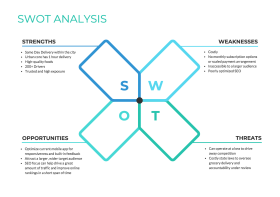Market Research Techniques for Business Success

In today’s rapidly evolving tech industry, market research plays a pivotal role in ensuring business success. Understanding the needs and preferences of your target audience, identifying market trends, and gaining insights into your competitors can significantly impact your strategic decision-making process. This article will explore the most effective market research techniques to help you stay ahead in the competitive tech niche.
1. Surveys and Questionnaires
Surveys and questionnaires are powerful tools for gathering first-hand information from your target market. By designing carefully crafted questions, you can collect opinions, preferences, and feedback on your products or services. Online platforms, such as Google Forms or SurveyMonkey, make it easy to distribute and analyze survey data. Conducting regular surveys will help you understand customers’ pain points, identify areas for improvement, and stay in touch with market trends.
2. Social Media Listening
Social media has become an invaluable resource for market researchers. By monitoring conversations, comments, and reviews across various platforms, you can gain valuable insights into customer sentiments and preferences. Analyzing social media data will not only allow you to gauge customer satisfaction but also help you identify emerging trends in the tech industry. Tools like Hootsuite or BrandWatch can assist in tracking and analyzing social media mentions related to your brand or products.
3. Competitor Analysis
Understanding your competition is essential for staying ahead in the tech niche. Analyzing your competitors’ strengths, weaknesses, marketing strategies, and product offerings will help you identify opportunities and differentiate your brand. Keep an eye on their social media presence, website updates, and customer reviews to gauge their market positioning. Tools like SEMRush or Ahrefs can provide comprehensive competitor analysis, including keywords they rank for, backlinks, and advertising spending.
4. Focus Groups
Conducting focus groups allows you to gather in-depth insights from a selected group of individuals who represent your target market. By engaging participants in structured discussions or product testing sessions, you can understand their needs, desires, and pain points in more detail. Focus groups also provide an opportunity to observe non-verbal cues and capture emotional responses, which might be missed in surveys or questionnaires. Tools like Zoom or Microsoft Teams make it easy to conduct virtual focus group sessions with participants from different locations.
5. Data Analytics
Data analytics is crucial for extracting valuable insights from large volumes of data. By utilizing analytics tools like Google Analytics or Adobe Analytics, you can analyze user behavior on your website, identify patterns, and make data-driven decisions. Additionally, leveraging customer relationship management (CRM) software can help you track customer interactions, preferences, and purchase history, providing a comprehensive view of your target market.
6. Industry Reports and Publications
Industry reports and publications provide an overview of market trends, industry forecasts, and consumer behaviors. Subscribing to relevant publications or accessing market research reports will keep you informed about the latest developments in the tech industry. Sources like Gartner, Forrester Research, or TechCrunch provide in-depth insights, predictions, and analysis, allowing you to make informed business decisions based on accurate market intelligence.
Conclusion
Market research techniques are invaluable for businesses operating in the tech niche. Surveys, social media listening, competitor analysis, focus groups, data analytics, and industry reports all contribute to a well-rounded understanding of your target market. By investing time and resources into market research, you gain a competitive advantage, allowing you to adapt to changing customer needs and preferences effectively. Utilize these techniques to not only maximize business success but also foster innovation and growth within your organization.


